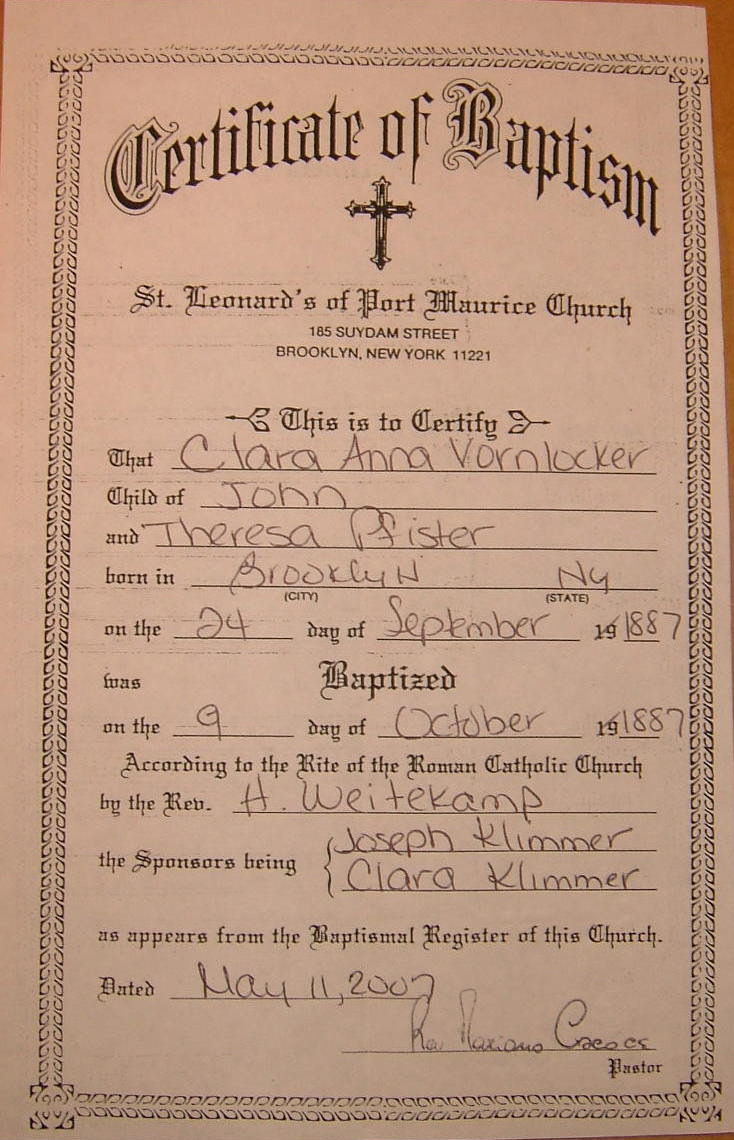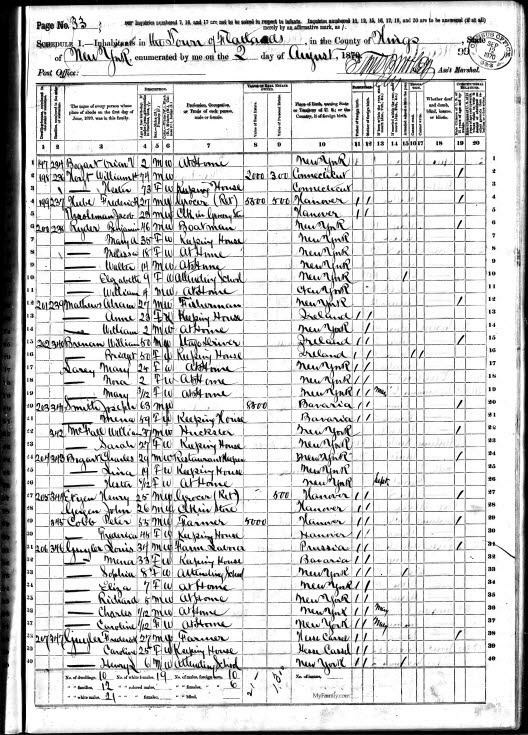Source reference S3 :
Source reference S4 :
Source reference S7 :

Source reference S8 :
Source reference S10 :

Source reference S11 :
Source reference S12 :
Source reference S13 :
Source reference S23 :
Source reference S24 :
Source reference S26 :
Source reference S29 :
Source reference S31 :
| Source Medium: Magazine |
Source reference S34 :
| Source Medium: Official Document |
Source reference S60 :
| Source Medium: Other |
Source reference S61 :
| Source Medium: Other |
Source reference S70 :
| Source Medium: Other |
Source reference S80 :
| Source Information Ancestry.com. Social Security Death Index [database on-line]. Provo, UT, USA: Ancestry.com Operations Inc, 2010. Original data: Social Security Administration. Social Security Death Index, Master File. Social Security Administration. About Social Security Death Index The Death Master File (DMF) from the Social Security Administration (SSA) currently contains over 85 million records. The current update reflects the latest information provided by the SSA as of December 2009. The file is created from internal SSA records of deceased persons possessing social security numbers and whose deaths were reported to the SSA. Often this was done in connection with filing for death benefits by a family member, an attorney, a mortuary, etc. Each update of the DMF includes corrections to old data as well as additional names. [NOTE: If someone is missing from the list, it may be that the benefit was never requested, an error was made on the form requesting the benefit, or an error was made when entering the information into the SSDI.] |
Source reference S84 :
Source reference S89 :
Source reference S91 :
Source reference S92 :
Source reference S93 :
Source reference S94 :
Source reference S95 :
Source reference S96 :
Source reference S126 :
Source reference S135 :
| Flatbush Reformed Dutch Church Marriages from Consistory Books, Kings County Long Island New York 1838 - 1848 Coordinated Records of Marriages and Baptisms from the Flatbush RDC Consistory Books And the Registers of its Daughter Church at New Lots Kings County, Long Island, New York Derived from the Register of Marriages (1787—1872) and Baptisms (1792—1872) Of the Flatbush Reformed Dutch Church Consistory Records (the Van Cleef Transcriptions, The Holland Society of New York Collections) And the Marriage and Baptismal Records of The New Lots Reformed Church (1824-1906) Recompiled, Reformatted and Cross-Referenced -with Some Annotations- And Keyed to the New York Genealogical & Biographical Society Record And its anthological companion Genealogies of Long Island Families By Richard A. McCool and John G. Storm May 1996 All Rights Reserved Dedicated to Jacob Tipton Rapelje And Anna Bergen Hitchings Baptized Together at New Lots On 27 June 1902 and Married -15 June 1929 Abreviations M = marriage B = baptism GLIF = Genealogies of Long Island Families. Ed. Henry B. Hoff NLRDC = New Lots Reformed Dutch Church NYG&B[S] = New York Genealogical & Biographical Society, Publishers of the NYG&B Record http://www.olivetreegenealogy.com/nn/church/flatbush_mar7.shtml The Reformed Church at Flatbush was formed in about 1654, almost immediately upon settlement of this section of Kings County, Long Island. A portion of Flatbush, called Oostwout, or East Woods, and the New Lands or New Lotts of Flatbush, extended from the east of Flatbush proper to the border with Queens County. On the north stood today's Cypress Hills, an area of dispute between the town of Flatbush and the town of Newtown. Oostwout shared a common border in the southwest with Flatlands, also in Kings County, and extended easterly to the Queens County border along Jamaica Bay. Distribution of the New Lotts began in 1677, in the right of Flatbush, with thirty-eight farm lots apportioned to certain Flatbush residents. Alter F. Landesman, in his book "A History of New Lots, Brooklyn" (Kennikat Press. 1977), notes that the first, or one of the first, settlers in the New Lotts was Dominie Polhemus, spiritual leader of the Flatbush Church. It appears that his home there may have predated the 1677 Charter and distribution. The Dominie's neighbors on the new farms were primarily members of the Flatbush Church. Over the years, the Flatbush Dominies frequently had responsibilities to other congregations as well. Thus, they saw to the record keeping as was convenient to their travel schedule among the Dutch congregations they sheparded. Ceremonies over which they officiated, therefore, might take place within the precincts of one church, but be recorded on another congregation's books. In some cases, such records found their way into the Consistory books of a congregation, as is the case with the Flatbush Church records compiled here. Marriages were not performed in the Dutch churches but rather at the home of the bride, typically, or at some other domicile, or at the minister's home, in the case of out-of-towners. For nearly 150 years, the East Woods boers made their way west to the Flatbush Church for Sunday services and the baptisms of their children. Concurrently, nuptials performed at New Lotts by the Flatbush minister were recorded at Flatbush, or elsewhere along his route. The population growth in the New Lotts was slow; the several farms remaining intact among the pioneer families for generations. Though those families were typically large, the Lots were infrequently subdivided--the excess population generally taking up land outside of Kings County, or obtaining a local farm by dower or outright purchase. Out-migration, then, and relatively permanent property lines, kept the population stable and low. This began to change dramatically in the 19th century. As Landesman points out, in 1822, ". . .New Lots increased sufficiently in population for it residents to work seriously for a place of worship of its own." Primary activists in this plan, such as Abraham Van Siclen, Tunis Schenck, Isaac Snediker, John Blake, Christian Duryea, John Wyckoff, John Williamson, Jr., Nicholas Linington and Johannes Vanderveer-, are seen to have had many of the religious rites performed within their families recorded in the Flatbush Consistory records compiled here. Often sharing their Dominie with the Mother Church at Flatbush and with other congregations, though the New Lotters now had church books of their own, ceremonial records continued to find their way into affiliated church books. We see also that residents of Old Town Flatbush continually reached into the New Lotts for spouses, and vice versa. The marriage and baptismal records of the New Lots Church were compiled several decades past; a typescript is available at the Long Island Room of the Queensboro Public Library at Jamaica, Queens, Long Island. The originals were photo-copied by the Latter Day Saints as well and are available on microfilm, a copy of which is available at the New York Genealogical & Biographical Society. The LDS photostats are used for the present effort. Not all of the New Lots Reformed Church records are used in this compilation, but rather only those records that correlate to those found in the Van Cleef transcriptions are abstracted. Similarly, the Flatbush Reformed Church marriage and baptismal records were compiled long ago by Harriet Mott Stryker-Rodda, C.G. whose typescript is available at the New York Genealogical & Biographical Society. A published version is found in the Holland Society Yearbook, 1898. The Flatbush Church records compiled here, however, as the title makes clear, are found in the Van Cleef translations of the Consistory books among the Collections of the New York Holland Society. These have remained largely out of sight to researchers, nearly hidden, except to the more knowleable genealogists. Many of the records found here are not used in the standard genealogies published on the families featured, leaving gaps which may now be filled. Within the marriage and baptismal records obtained from the Consistory book, the compilers take note of a subsection of baptismal records, separate from, and out of order to, the other christenings listed. In the Van Cleef transcriptions these are provided under the heading "Baptisms by the Revd. Martinus Schoonmaker as far as accounts have been received." This page begins with a baptism performed in 1804, then skips to an entry subheaded 1810, followed by two entries subheaded 1811, before returning to the subheading 1810. The next record in this sequence is subheaded 1811 (Van Cleef page numbers 21 & 22, actual page number 59). This would seem to indicate that the Consistory had become aware that some baptisms had not been duly recorded upon the Church books and they therefore applied to Schoonmaker for a more complete listing. The data from this separate record, designated by the compilers as the Schoonmaker Addendum, are now chronologically comingled, but remain identified as derived from Schoonmaker. The history of many individual New Lots family groups begins in the Flatbush records and continues in the New Lots Church books. The compilers have occasionally accessed other resources, particularly in cases where the continuity between the records of the two Churches may not be readily apparent, or supplementation of published accounts might be useful, or long posed genealogical questions might now be answered. May 1996 Richard Alan McCool John Garrison Storm Columbus, Ohio Brooklyn, New York |
These pages have been generated by the software Oxy-Gen version 1.39c, on 21/02/2016. You can download it here.